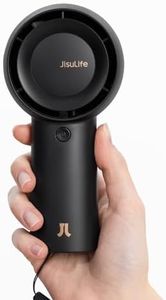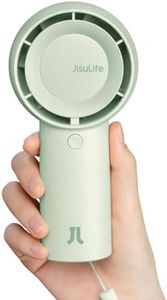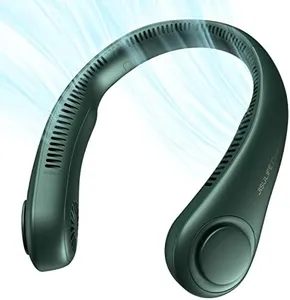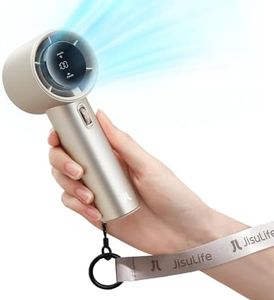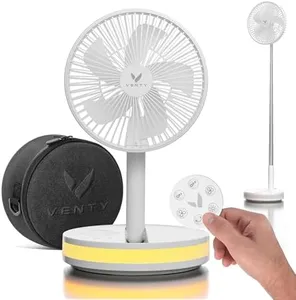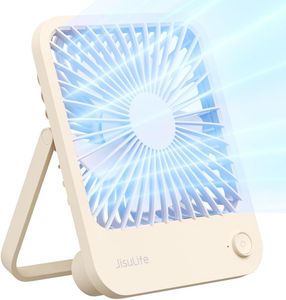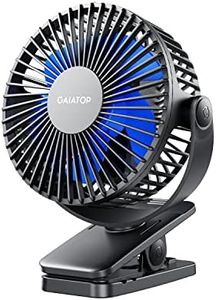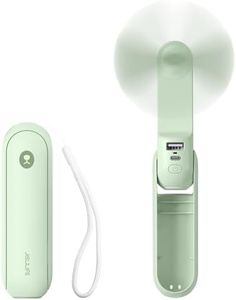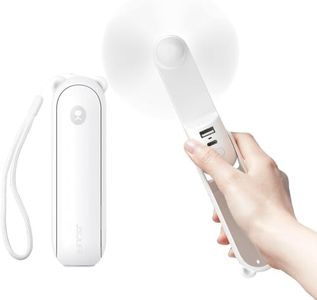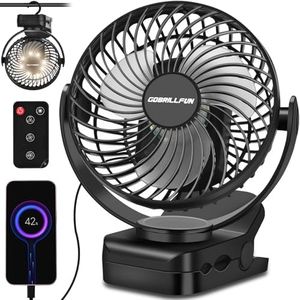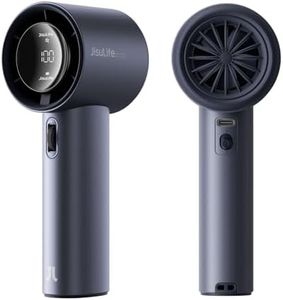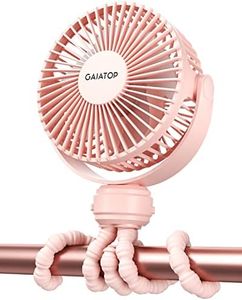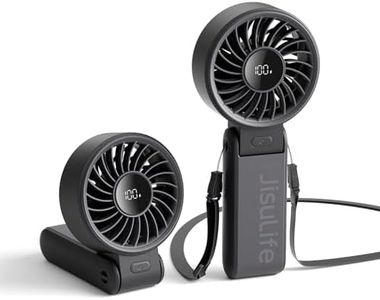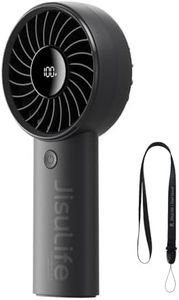We Use CookiesWe use cookies to enhance the security, performance,
functionality and for analytical and promotional activities. By continuing to browse this site you
are agreeing to our privacy policy
10 Best Rechargeable Fans
From leading brands and best sellers available on the web.Buying Guide for the Best Rechargeable Fans
Picking the right rechargeable fan involves a bit more than just grabbing the first one you see. It's important to think about where you'll use the fan and what you expect from it. Will you use it indoors, outdoors, or maybe during power outages? How long do you need it to run without charging, and how strong a breeze do you want? Understanding these needs helps guide you to a fan that's practical, comfortable, and convenient for your situation.Battery CapacityBattery capacity, usually measured in milliampere-hours (mAh) or watt-hours (Wh), shows how much power the fan can store and directly influences how long it will run before needing to be recharged. Higher capacity means longer usage, but can also make the fan heavier. Small fans may have around 2000-4000 mAh, offering a few hours of use—good for short trips or desk work. Medium options range from 5000-10000 mAh, lasting most of the day and fitting general home or outdoor use. Large fans can exceed 10000 mAh, perfect for long-term outages or extended outdoor activities. To pick the right one, think about how often you want to recharge, how long your typical use will be, and how much portability matters to you.
Airflow Strength (Fan Speed Settings)Airflow strength refers to how much air the fan can move, often adjustable through different speed settings. Some fans offer just low and high modes, while others give you more precise control. Lower settings are quieter and save battery but move less air—great for close use or night time. Higher speeds give powerful airflow for hot days or larger spaces but drain the battery faster. Consider where you'll use the fan and how much air you need moved. If you want flexibility, look for at least three speed settings, so you can balance power and battery life as needed.
Portability (Size and Weight)Look at how big and heavy the fan is, especially if you plan to carry it around. Personal fans are small and light, ideal for travel, office, or bedside use. Medium fans offer a balance between portability and power, suitable for home rooms or outdoor picnics. Large rechargeable fans are less portable but deliver more airflow for big spaces, ideal for power outages or group activities. Decide based on how much you move around with your fan or if it will mostly stay in one spot.
Charging OptionsRechargeable fans differ in how they can be refueled—some use USB ports, others have dedicated adapters, or even solar panels. USB-charged fans are convenient since you can plug them into power banks, laptops or car chargers, making them versatile for on-the-go use. Some larger fans come with their own adapters for faster charging. Think about the situations you'll be using the fan in: if you'll be far from outlets, consider USB or solar-charging for more options.
Noise LevelNoise level is how loud the fan is when running, usually measured in decibels (dB). Quieter fans are more pleasant for sleeping, studying, or office work, while noisier fans may be acceptable for outdoor or louder environments. Generally, small and low-speed fans are less noisy, while bigger or high-speed fans make more sound. If you're sensitive to noise or will use it in quiet places, check for models that advertise low noise or quiet operation.
Extra FeaturesSome rechargeable fans come with useful extras like built-in lights, timers, oscillation (side-to-side movement), remote controls, or even mosquito repellents. While not essential, these features can make using the fan more convenient or comfortable, depending on your needs. For example, a light is handy for camping, while a timer helps save battery if you only want it on for a certain period. Consider which extras match your routines and environments for added value.
